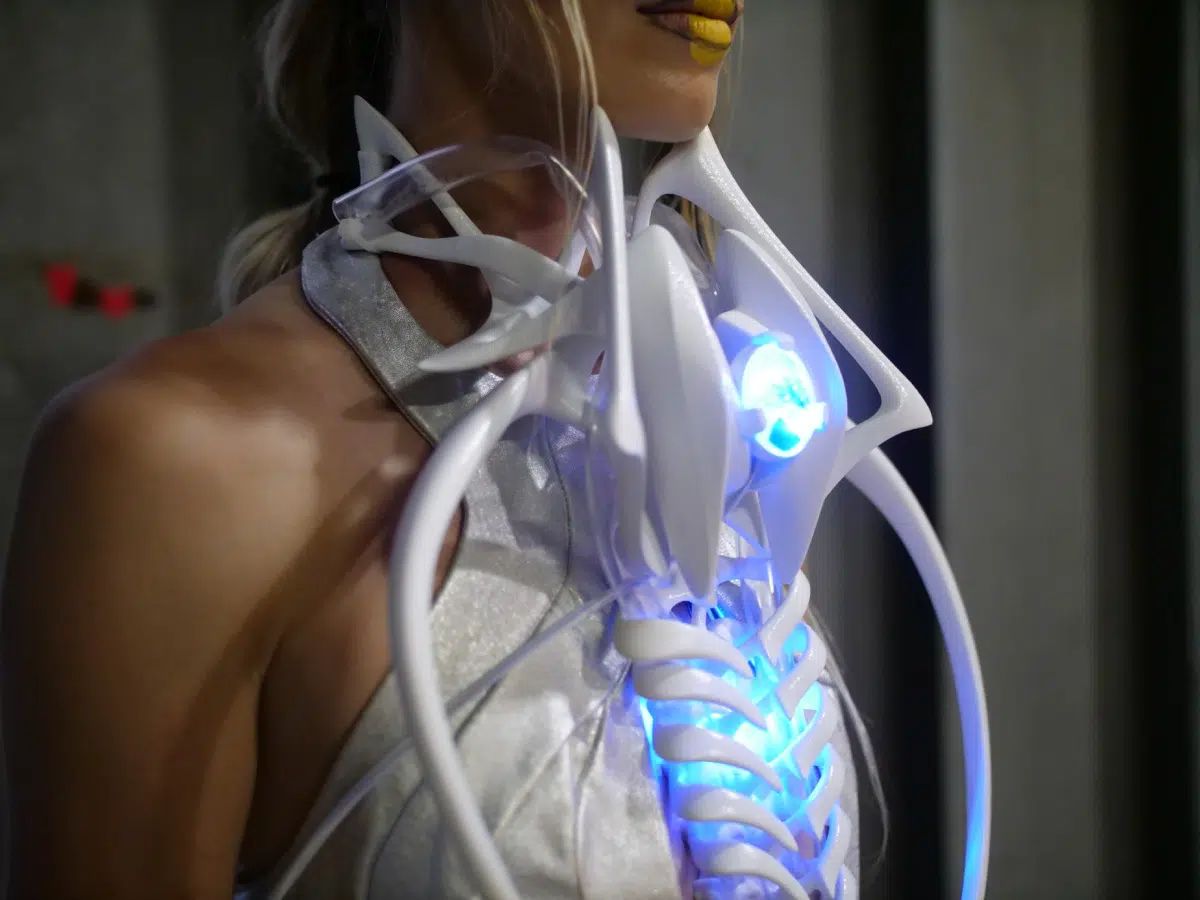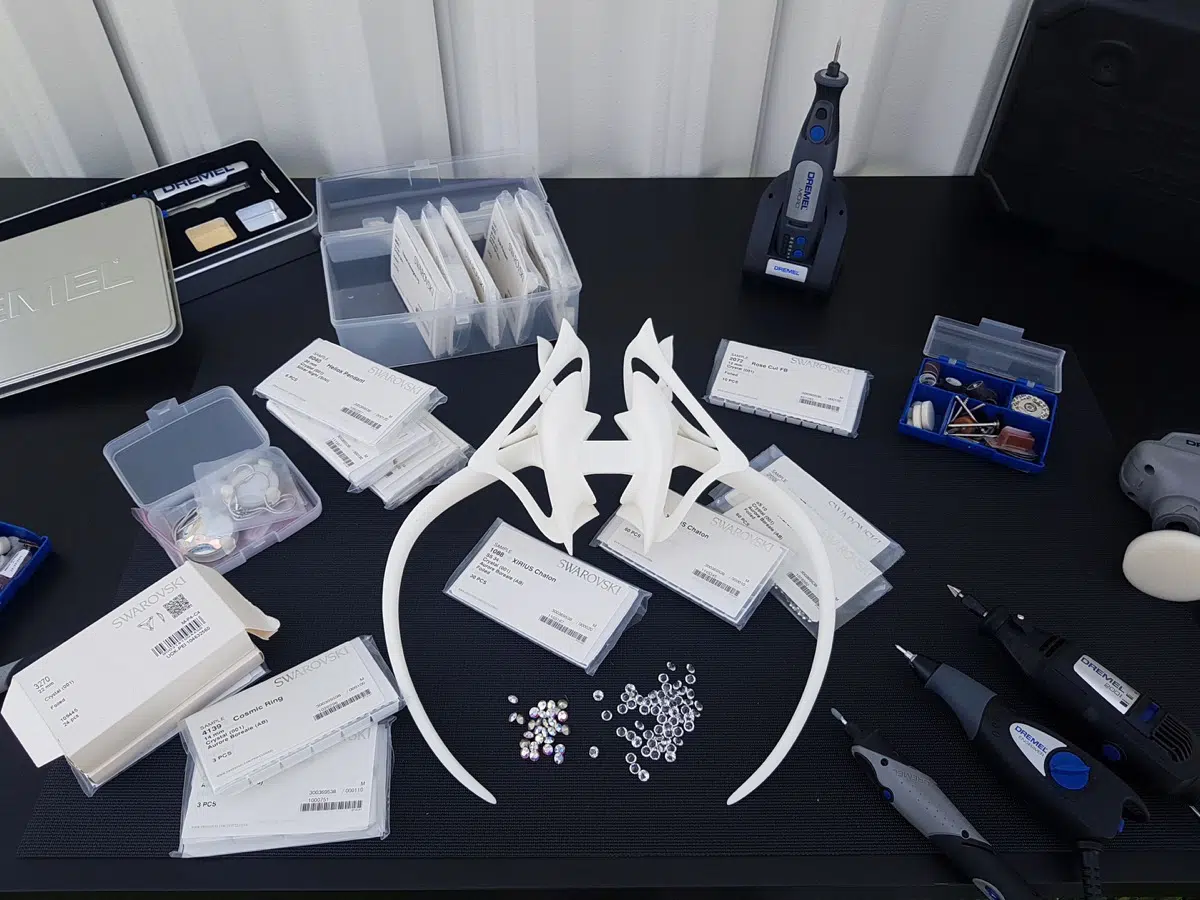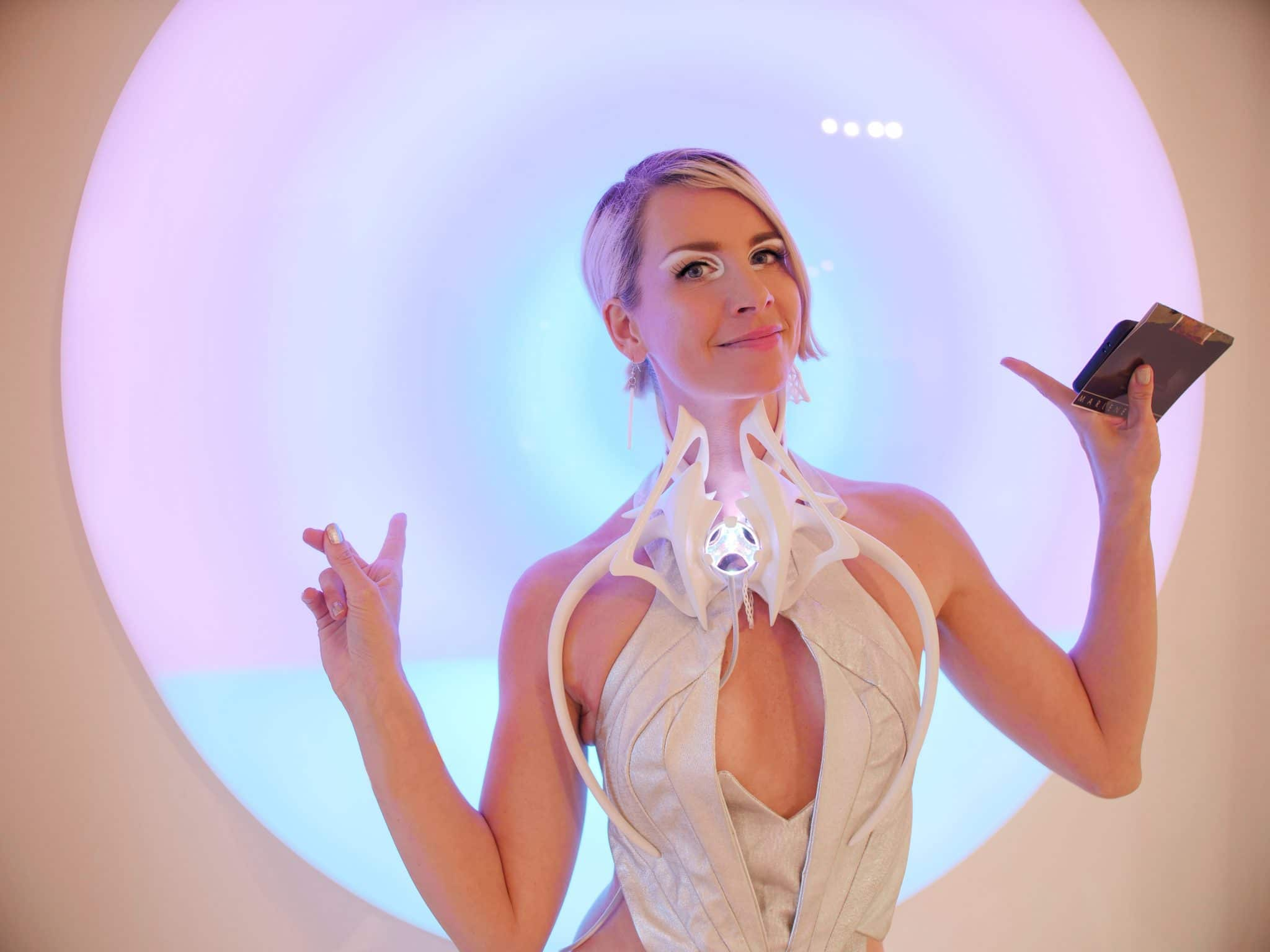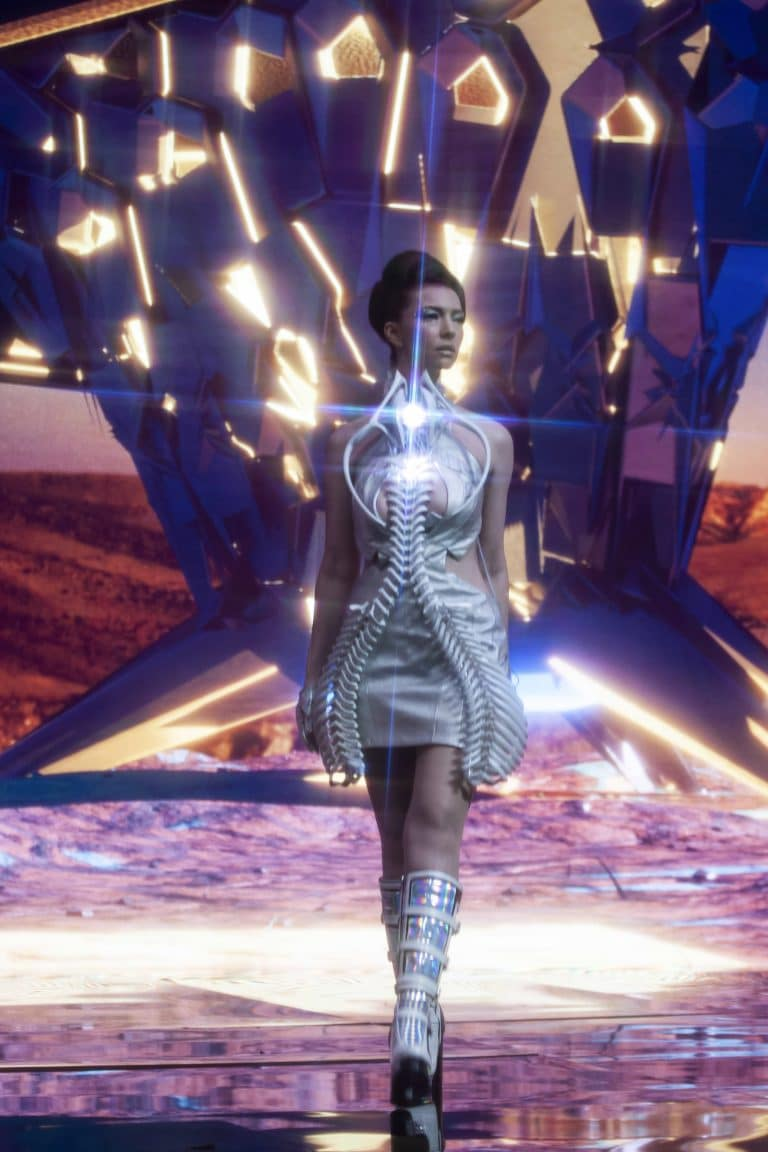In collaboration with a leading global crystals manufacturer, Dutch fashion tech designer Anouk Wipprecht just released her new 3D printed HeartBeatDress – a dress that records and broadcasts something very ‘intimate’ to you as a provocation to be true to your feelings. Considering that Wipprecht’s 3D printed dress creations are often so advanced that they enjoy popularity for several years after the initial launch, each new release is an event for both the 3D printing and the fashion tech industries.
“At the dawn of this Modern Age, technology has given us the flexibility to investigate endless opportunities with electronics that have become smaller and smaller—Wipprecht explained. Over the past 20 years, I’ve been connecting our bodies to electronics and integrating this through robotic fashion design. What does it mean when we can connect technological-expressive garments to our bodies, body signals, and even emotions?” She asked.
Reaching farther than curiosity, Wipprecht’s creations combine haute couture aesthetics with digital technology that examines the behavioral, neurological, and emotional states through visceral interaction. With a forward-thinking vision, she believes high-tech fashion is the key to a deeper understanding of how we process our emotions and their effects on our minds and bodies.
And the latest disruptive design, developed with crystal-maker Swarovski, uses built-in sensors, robotics, sound and light to respond in time with the wearer’s heartbeat.

Crystal meets tech
It sounds simple and maybe even poetic, putting one’s vital force on display, but it’s also incredibly revealing to make you wear your ‘heartbeat on your sleeve’. Imagine wearing it while talking to a special someone you’d like to be more than just friends with, or how about a job interview or on a hot date? They’ll be able to see that your heart is pounding with fear or excitement.
Anouk was about 14 years old when she fell in love with fashion because of its “expressive and communicative” nature. With the study of design, she discovered robotics. “For me, robots basically have the brain and heartbeat that I wanted my fabrics and garments to have.” This is what drove her to create the very concept of “intelligent couture.”

“It’s almost like you have goosebumps, you cannot control it, or you start to be red in your face. In the purest form, you’re able to broadcast your emotions,” Anouk further explained. “If you are wearing your heartbeat on your sleeve, it is a really pure thing. It also gets you in a lot of really awkward situations that lend themselves to the observation of new expressions from an interactive design aspect.”
The fascination between where human behavior and digital couture meet has already led Wipprecht to create 60+ dresses, systems, devices, and prototypes over her lifetime that all react differently to either the body, the surroundings, or both.

3D printed HeartBeatDress
At the Swarovski headquarters in Wattens, Austria, Anouk began working on a project to investigate the emotional connection between the crystal and the heartbeat. The HeartBeatDress is created using digital design software and mainly 3D printed in PA-11, using selective laser sintering in collaboration with long-time partner Shapeways and Niccolo Casas. It provokes the notion of a ‘spine’ as its vertebrae-like geometry focuses on the relation between architecture, fashion, the body, and technology.
Manufacturing on Demand
In total, the 3D printed dress comprises a total of four parts and the crystal holder: neckpiece, waist piece. Two hip pieces were printed in PA-11 (nylon 11) at Shapeways, while the crystal holder was printed on a Formlabs 3 resin 3D printer. The crystal is manufactured with Swarovski at Swarovski HQ and has a custom foiling and circuit board on its back, connected with conductive paste and a charging coil. The crystal can be worn in the dress 3D printed neckpiece and connect to the tech in the dress, or the crystal holder can be taken out and worn as a necklace.
For the HeartBeatDress, Anouk also prototyped with the BIOPAC MP40 system and the PACIS pack for this dress. Combined, these constitute a modular data acquisition & analysis system for life science research. “By using systems like this, you can develop more cost-effectively and rapidly. Especially within the biomedical fields where manufacturing costs are exorbitant. Besides, it’s always great to see new reliable biomedical technology being brought to the open-source and open hardware scene,” she added.
The designer is not new to the world of body sensors; she has already created dresses that work on brain signals, muscle contractions, and stress levels. On this topic, she commented: “Working with the body is super interesting, as you can take a lot of data from it and put it to amazing interactions. Like in this case – fashion becomes an interface – something that communicates something maybe ‘hidden’ from you.


As a designer, Wipprecht is interested in supporting causes that have to do with health and wellbeing. “Each year, millions of people face the reality of living with a mental illness, so how can we create technologies and solutions that can help people be a bit more ‘real’ and a bit less ‘forced’ towards themselves? For me, this dress stands for that: with the visual aspect of the vertebrae (literally the ‘spine’ of your body holding you up) combined with one of the most fragile organs of the body: the heart. In a way, as creators, we now have the opportunity to be designing technologies that listen to the body and ‘feel’ us – in whatever state that is – instead of creating technologies that are in our pockets and overwhelm and dictate us.”
“I try to envision how technology can move away from being the overwhelming force it is today. I ask myself: when and if technology is living on the body, what does it do? How does it react or interact? How can it be an interface and express something new? How can it help us do things we cannot do ourselves? My interest is in finding the extra capabilities fashion can give to the body to enhance communication in a non-verbal way. We are so used to looking on our ‘screens.’ Technology came into our lives to help us and create convenience, but nowadays, it often ends up overwhelming us instead. So how can it help us get closer to ourselves again?”
Suicide Moonbeams
Several artists have been driven to Wipprecht’s creations and this is no exception. The HeartBeatDress is featured in the most recent clip of USA-based musician Chrystabell. “The video clip ‘The Suicide Moonbeams’ has the intention of opening the heart and the dimensional portal. FashionTech is an important part of the sacred conscious clothing of our future. The HeartBeatDress that Anouk created, electronic frequencies and lyrics from Chrystabell and visuals all melt together in harmony,” explained Melana Abramov of Dame Productions, Director & Producer of the video clip.
The song sends off the listener with a loving message of reassurance. “There are those moments when you might feel like you’re alone, but really the access to unity and connection is always there,” commented Chrystabell. “It’s about acknowledging that camaraderie with the beings around you, and then taking turns lifting each other up. Because the truth is that there will be times when you’re strong, and times when you need guidance and help—so then the question becomes, how can we all take better care of each other?”
HeartBeatDress photography by Yanni de Melo
* This article is reprinted from 3D Printing Media Network. If you are involved in infringement, please contact us to delete it.
Author: Davide Sher



Leave A Comment